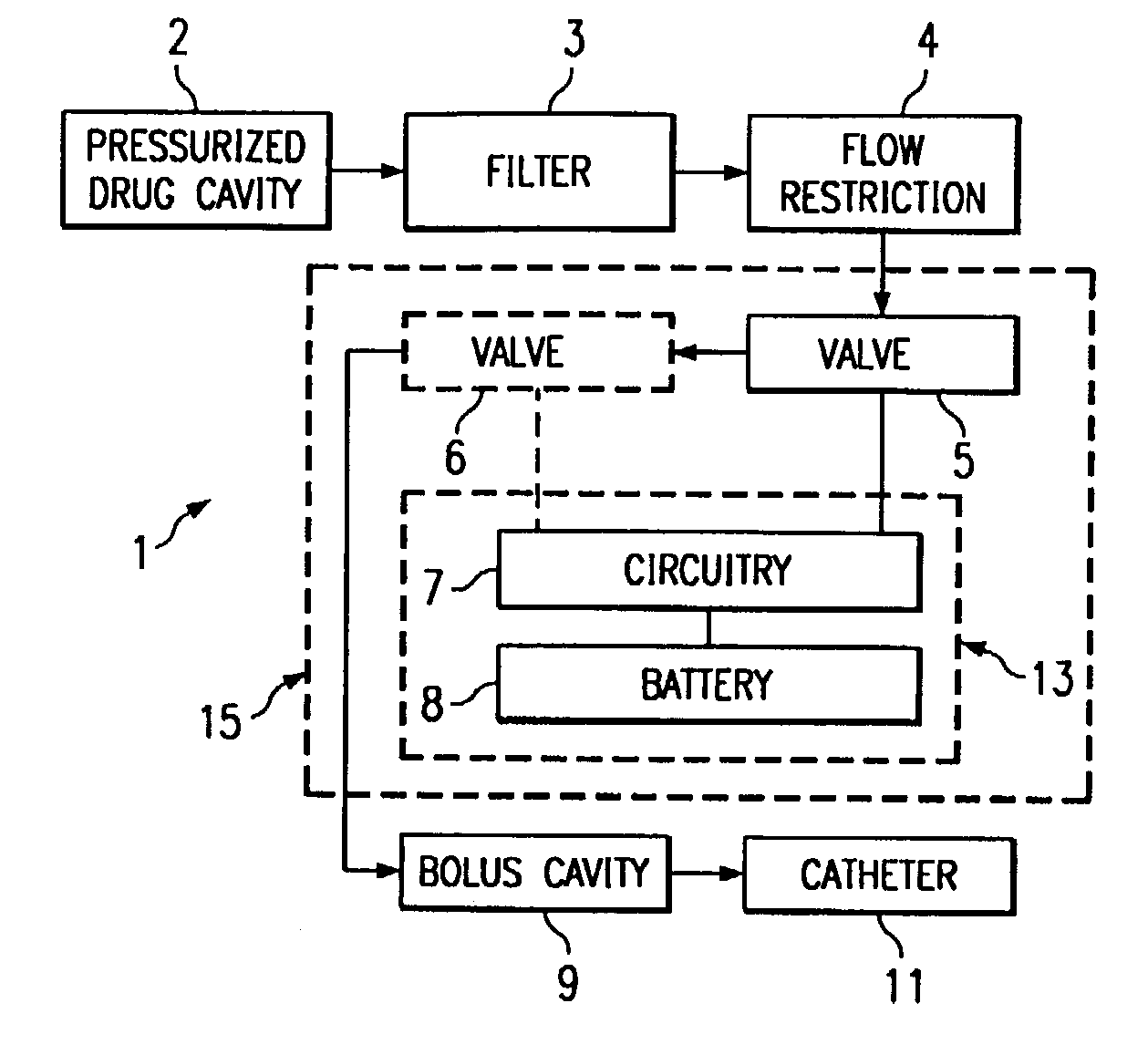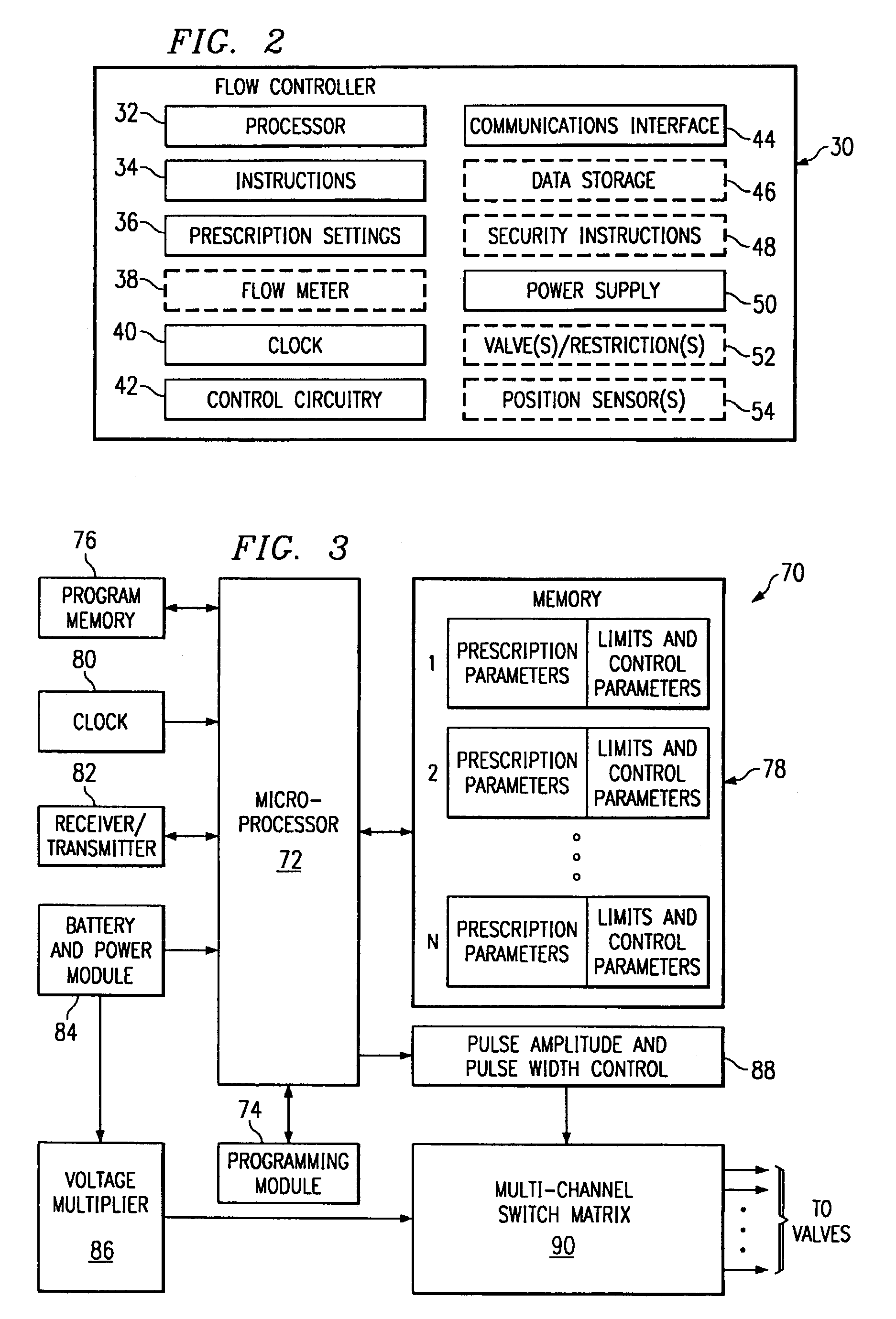Programmable dose control module
a technology of dose control module and program, which is applied in the direction of process and machine control, positive displacement liquid engine, instruments, etc., can solve the problems of cumbersome and inconvenient clothing selection, unobtrusive implementation system, cumbersome and inconvenient,
- Summary
- Abstract
- Description
- Claims
- Application Information
AI Technical Summary
Problems solved by technology
Method used
Image
Examples
Embodiment Construction
[0034]Implantable drug treatment therapy is useful in treating a variety of ailments such as chronic pain management, insulin-dependent diabetes, chemotherapy (systematic and targeted), Myelin treatment, and neurotransmitter treatment, among others. In each of these examples, patients could benefit from greater variety of prescriptions, more control, and accurate monitoring of reservoir levels.
[0035]For example, in the case of pain management, patients may benefit from selectively applying various doses based on need. A preset array of prescription levels would permit the patient to adjust treatment based on pain, increasing as needed and decreasing otherwise. Limits and other conditions may be established to prevent over dosing. Such a system would permit a patient to compensate for developing tolerances or advancing pain.
[0036]Patients can also benefit from having more than one pharmaceutical agent or treatment solution delivered to the treatment area. Differing rate of drug deliv...
PUM
 Login to View More
Login to View More Abstract
Description
Claims
Application Information
 Login to View More
Login to View More - R&D
- Intellectual Property
- Life Sciences
- Materials
- Tech Scout
- Unparalleled Data Quality
- Higher Quality Content
- 60% Fewer Hallucinations
Browse by: Latest US Patents, China's latest patents, Technical Efficacy Thesaurus, Application Domain, Technology Topic, Popular Technical Reports.
© 2025 PatSnap. All rights reserved.Legal|Privacy policy|Modern Slavery Act Transparency Statement|Sitemap|About US| Contact US: help@patsnap.com



